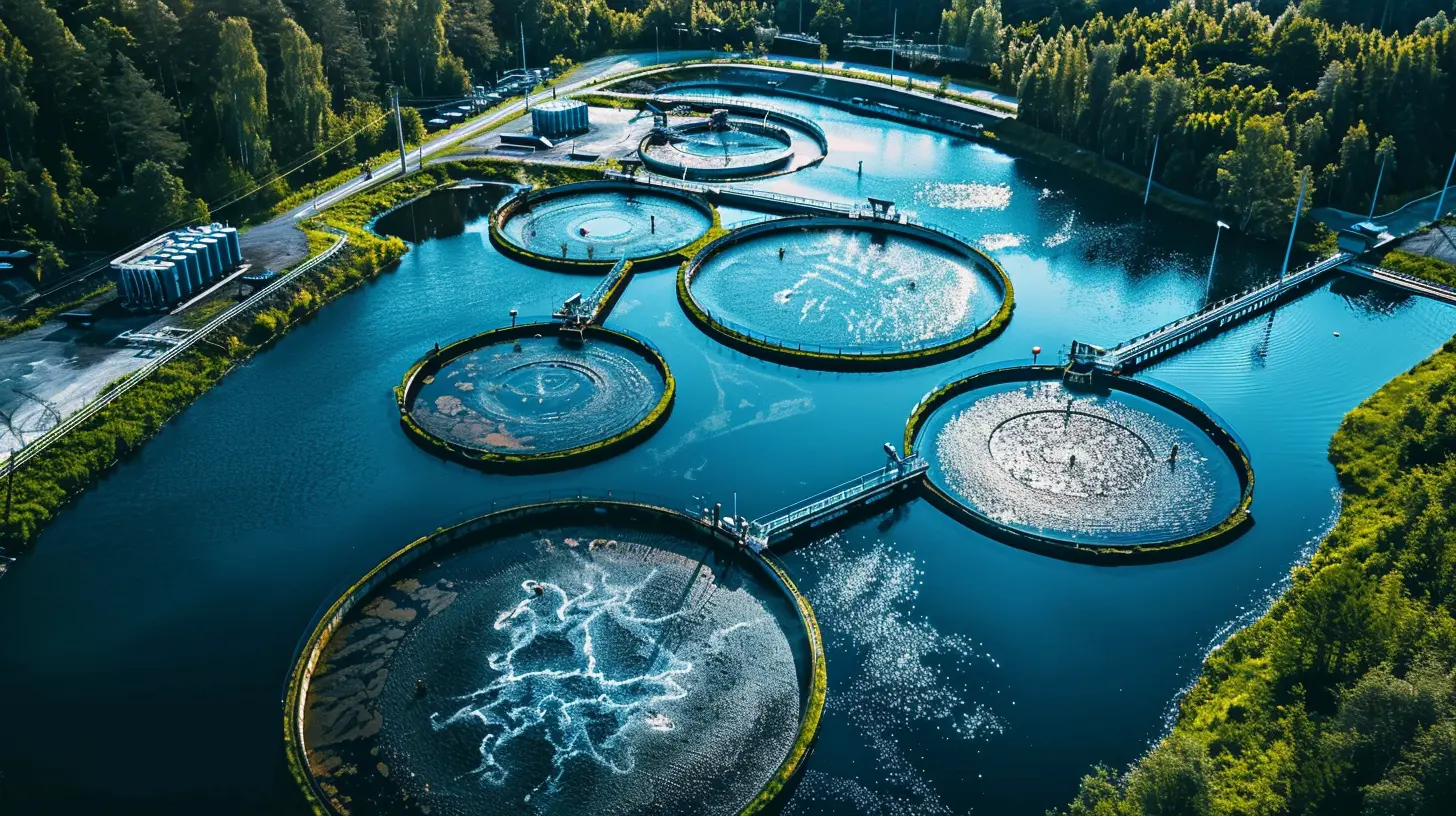How to Implement Sustainable Water Management in Your Business
12 May 2025
Have you ever thought about how much water your business uses daily? And I’m not just talking about the obvious stuff like kitchens or restrooms – think bigger. Manufacturing processes, landscaping, cooling systems, cleaning, you name it. Water is a resource that often gets taken for granted, yet it’s one of the most valuable assets we have, especially in the face of climate change and growing global demand.
Sustainable water management isn’t just a nice-to-have anymore – it’s quickly becoming a necessity for businesses to remain competitive, resilient, and responsible. But don’t let the word “sustainable” scare you. We’re not talking about turning your office into a rainforest or making employees drink rainwater to survive. It’s about being smarter with the water you use and finding ways to reduce waste.
In this guide, I’ll walk you through practical, actionable steps to implement sustainable water management in your business while keeping it real (and, hopefully, easy). Let’s dive in! 
Why Does Sustainable Water Management Matter?
First things first, why should you care?Think about it: water isn’t unlimited. Sure, 70% of Earth’s surface is covered in water, but most of it isn’t usable. Freshwater – the stuff we need to drink, irrigate crops, and run businesses – makes up less than 3% of all water on Earth. And even that tiny percentage is under threat from things like pollution, overpopulation, and climate change.
Now, consider your business’s role in all this. If you’re using more water than necessary or wasting a bunch of it, you’re contributing to the problem. Plus, water costs money, and wasting it means you’re literally tossing cash down the drain (pun intended).
Still not convinced? Consumers and stakeholders are paying closer attention to sustainability efforts. Businesses that show they care about the environment are more likely to win loyal customers and partners.
Sustainable water management isn’t just “saving the planet.” It’s good for your reputation, your bottom line, and, ultimately, your survival in the long run. 
Assess Your Current Water Usage
You can’t fix what you don’t measure, right? Step one in implementing sustainable water management is understanding how much water your business uses and where it goes.Conduct a Water Audit
A water audit is like a health check for your water usage. Start by tracking:- How much water your business consumes (check those water bills!).
- Where the water is being used (e.g., toilets, sinks, industrial processes, irrigation).
- Any obvious leaks, inefficiencies, or areas of overuse.
If your business is on the larger side, you might want to hire a professional water auditor to dig deeper. They can often uncover hidden problems that you’d never think to look for, like underground pipe leaks or inefficient fixtures. 
Set Clear Water Management Goals
Once you’ve got the data, it’s time to set some goals. But don’t just slap together vague statements like “use less water.” Be specific.- Do you want to reduce water usage by 20%?
- Cut waste from specific processes?
- Reuse 50% of greywater (more on that later)?
Pro tip: Use the SMART framework – your goals should be Specific, Measurable, Achievable, Relevant, and Time-bound. 
Upgrade to Water-Efficient Fixtures and Equipment
Sometimes, small changes can make a huge difference. Upgrading to water-efficient fixtures is one of the simplest (and relatively inexpensive) ways to save water in your business.Examples of Water-Saving Fixtures
- Low-flow faucets and toilets: These use significantly less water compared to traditional ones without sacrificing functionality.- Touchless faucets: Bonus – they’re not only water-saving but also more hygienic.
- Efficient irrigation systems: Use drip irrigation instead of wasteful sprinklers to water your landscaping.
If your business uses industrial equipment, explore energy- and water-efficient alternatives. Yes, these upgrades cost money upfront, but they’ll save you loads over time.
Reuse and Recycle Water
Ever heard of greywater? No, it’s not some ominous, cloudy stuff from a sci-fi movie. It’s gently used water from things like sinks, showers, and even laundry (basically, anything except toilets or contaminated wastewater). Greywater can be treated and reused for non-potable purposes, like irrigation or flushing toilets.For example:
- If you’re in hospitality, you can reuse treated greywater to clean outdoor areas.
- In manufacturing, you can recycle cooling water multiple times before disposal.
This is where technology can really help. Water recycling systems may seem like a big investment, but they can pay off in the long run, both financially and environmentally.
Fix Leaks and Address Wasted Water
Leaky faucets, running toilets, or outdated pipes might seem like minor nuisances, but over time, those drops add up to gallons – and dollars.Regular Maintenance is Key
- Assign someone to do regular checks (monthly or quarterly).- Fix leaks immediately when you spot them.
Think of it like taking your car in for routine oil changes – small upkeep tasks now prevent massive, expensive problems later.
Use Technology for Smarter Water Management
We live in the age of smart technology, so why not put it to good use? There are tons of tools and systems available to help businesses better manage water usage.Smart Solutions to Consider:
- Water management software: These tools monitor water usage in real-time and identify inefficiencies.- Rainwater harvesting systems: Collect and store rainwater for later use (hello, free water!).
- IoT sensors: Use Internet of Things technology to detect leaks, track usage, and send alerts.
Engage Employees and Build a Culture of Conservation
Let’s be honest – you can’t tackle water management alone. Your employees are key players in making this work. It’s like a team sport; everyone needs to be on the same page.Tips to Involve Your Team
- Educate and train: Hold workshops or share tips on how employees can contribute to water-saving practices.- Incentivize ideas: Reward employees who come up with creative ways to save water.
- Communicate goals: Make sure everyone knows WHY sustainable water management matters and how they can play a part.
Think of it like building a company-wide habit – the more it’s practiced, the more natural it becomes.
Partner with Sustainability Experts
No one expects you to figure it all out on your own. Partnering with sustainability consultants or joining water conservation programs can provide you with the expertise and resources you need.For example, organizations like the EPA offer tools, guidelines, and certifications that can help businesses up their sustainability game.
Monitor, Optimize, and Celebrate Success
This isn’t a “set it and forget it” situation. Once you’ve implemented water-saving strategies, you need to keep an eye on how they’re working.Tracking and Adjusting
- Monitor monthly water usage and compare it to your baseline (pre-sustainability efforts).- If something’s not working, tweak the strategy.
When you hit your goals or see progress, celebrate! Share the news internally to motivate your team or even tell your customers about it to show them your commitment to sustainability.
The Ripple Effect of Sustainable Water Management
At the end of the day, implementing sustainable water management goes far beyond saving on utility bills. It shows that your business cares – about the planet, the community, and the future.Your efforts create a ripple effect. When customers see you stepping up, they’re inspired to make better choices. When other businesses notice your success, they might follow suit. And when your employees feel like they’re part of something meaningful, they’re more likely to stay engaged and committed.
So, take that first step. Assess, plan, and act. It might feel overwhelming, but remember: even the smallest drops can create big waves.
all images in this post were generated using AI tools
Category:
SustainabilityAuthor:

Rosa Gilbert
Discussion
rate this article
3 comments
Skyler Porter
Implementing sustainable water management isn't just a trend; it's a business imperative. Embrace innovative strategies to conserve resources, cut costs, and boost your brand's eco-friendly reputation.
May 18, 2025 at 3:05 AM

Rosa Gilbert
Absolutely! Sustainable water management not only addresses environmental concerns but also enhances efficiency and brand value. Let's explore effective strategies to integrate these practices into your business.
Winona Harper
Great insights, thank you!
May 17, 2025 at 12:03 PM

Rosa Gilbert
Thank you for your kind words! I'm glad you found it helpful.
Vesperos Conrad
Great insights! Implementing sustainable water management can truly benefit both your business and the environment.
May 15, 2025 at 7:50 PM

Rosa Gilbert
Thank you! I’m glad you found the insights valuable. Sustainable water management is indeed a win-win for businesses and the environment.



